| (insert your NIE or newspaper logo here) |
Weekly Online LessonOnline Lesson ArchiveGrade Level: 7-12
|
Conflict & Culture in the Cradle of Civilization
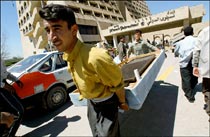 While American soldiers have been sweeping through cities to eliminate Saddam Hussein's regime, Iraqi civilians this week have been looting unguarded facilities for desirable goods -- taking medical supplies from hospitals and clinics, furniture from hotels, and money bags from bank vaults.
While American soldiers have been sweeping through cities to eliminate Saddam Hussein's regime, Iraqi civilians this week have been looting unguarded facilities for desirable goods -- taking medical supplies from hospitals and clinics, furniture from hotels, and money bags from bank vaults.
Perhaps the worst case of looting, however, has happened in several of the country's most important art and cultural institutions, including the National Museum of Iraq in Baghdad.
Before looters scoured the museum's main floor on April 11, 2003, it housed more than 100,000 artifacts spanning 8,000 years, including irreplaceable sculptures, inscribed tablets and carved reliefs from a half-dozen cultures, including the Sumerian, Assyrian and Babylonian empires. Upstairs, portions of the museum seemed to have been spared from Friday's assault, and there was hope that the museum's 30 senior archaeologists had moved the most important collections to safety before the war.
Looters also plundered Mosul University's library, with its rare ancient manuscripts. The library was ransacked despite appeals broadcast from the minarets of the city's mosque to halt the destruction.
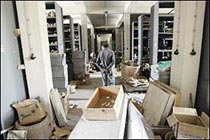 Since this war began, archeologists and art historians have expressed concern over how war would take its toll on such antiquities. Many of these pieces will disappear into international markets and never be seen again. Such events happened after the 1991 Persian Gulf War, when more than 4,000 items vanished from Iraqi museums.
Since this war began, archeologists and art historians have expressed concern over how war would take its toll on such antiquities. Many of these pieces will disappear into international markets and never be seen again. Such events happened after the 1991 Persian Gulf War, when more than 4,000 items vanished from Iraqi museums.
The ransacking of this region's ancient cultural history is no small atrocity, where Iraq occupies most of the area known as Mesopotamia, also referred to as the "Cradle of Civilization." As early as 6,000 years ago, people living on these fertile soils domesticated animals, began agriculture, and gave rise to the world's earliest cities.
For this week's lesson, you'll travel back in time to learn about the ancient peoples who lived here, from the Sumerians of 2900 B.C. to the Chaldeans of 600 B.C. Then you'll tour the Metropolitan Museum of Art to check out some of the art and history these cultures created over the centuries.
The Fertile Crescent
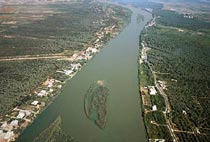 Mesopotamia means "between the rivers," an appropriate name for this area that lies between the Tigris and Euphrates rivers. Begin by reading a brief overview at MSN's Encarta page on Mesopotamia. While you're here, check out the Dynamic Map to familiarize yourself with the local geography and browse the Multimedia section to see other good reference maps as well as photos of the area.
Mesopotamia means "between the rivers," an appropriate name for this area that lies between the Tigris and Euphrates rivers. Begin by reading a brief overview at MSN's Encarta page on Mesopotamia. While you're here, check out the Dynamic Map to familiarize yourself with the local geography and browse the Multimedia section to see other good reference maps as well as photos of the area.
Now launch your in-depth expedition into Mesopotamia at Washington State University's World Civilizations site. (NOTE: Along your journey, write down the names and corresponding time periods of each people for later reference.) After reading the introduction, click to The Sumerians chapter. What valuable natural resource was found here and why was it so important? What type of governance ruled the first states? How did writing, science, religion and law fit into this region's early cultural development?
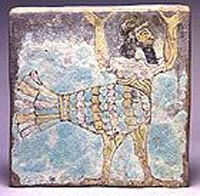 Continue through the time period pages with The Akkadians and The Amorites. What are "Semitic languages"? How did governance change from Sumerian to Amorite administrations? What are some of the rules The Code of Hammurabi dictates? Who was Gilgamesh, and how did he figure into the culture's mythology and literary works?
Continue through the time period pages with The Akkadians and The Amorites. What are "Semitic languages"? How did governance change from Sumerian to Amorite administrations? What are some of the rules The Code of Hammurabi dictates? Who was Gilgamesh, and how did he figure into the culture's mythology and literary works?
Next, read about The Hittites and The Kassites. From what regions did each people apparently emigrate? What were some of the conflicts between these two peoples? In what ways did they coexist in Mesopotamia?
In what part of Mesopotamia did The Assyrians and, later, The Chaldeans live? What was the Assyrians' "obsession" that spurred innovations in their society's science and technology? How did the Chaldeans treat their local Jewish residents? How would you characterize the relationship of Babylonians to the Assyrians and Chaldeans?
Ancient Artifacts
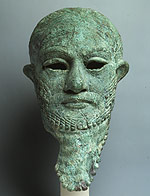 Like many cultures, the ancient people of Mesopotamia created and left behind artistic expressions of who they were and how they lived. And although many of these significant artifacts have recently been stolen from Iraqi museums and other depositories, others remain guarded in collections worldwide.
Like many cultures, the ancient people of Mesopotamia created and left behind artistic expressions of who they were and how they lived. And although many of these significant artifacts have recently been stolen from Iraqi museums and other depositories, others remain guarded in collections worldwide.
One of the best collections of ancient Mesopotamian culture lives at The Metropolitan Museum of Art in New York, called the Ancient Near Eastern Art Collection.
Browse the collection through one of the following ways: View 50 Highlights, View 10 At A Time, or start at Item 1 and click to the NEXT item through all 50 items. No matter which way you decide to tour the gallery, make sure to check out when each item was made and where each item was discovered and match it to the reference list you created earlier. Although some of the items didn't come specifically from Mesopotamia, they were all created in that general region and so reflect people's daily routines and cultural influences of those time periods.
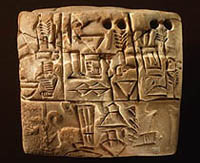 As you browse through the collection, to which group of people is each object associated? How does the artifact's design relate to daily activities, religious beliefs, or government?
As you browse through the collection, to which group of people is each object associated? How does the artifact's design relate to daily activities, religious beliefs, or government?
What kinds of materials were used to make each object? From where may have the artisan obtained those materials -- locally or through trade with another region? What kind of technology and skill was used to create the object?
In what ways does each object reflect unique artistic creativity? How was functionality incorporated into the design? What does each piece tell us or not tell us about the people's history and culture at that time?
Newspaper Activities
In issues of Targetnewspaper find articles related to Iraq's cultural history. Have any more antiquities collections been ransacked by looters? Have any stolen items been found, returned to authorities, or shown up on the Internet for sale? If so, who created the objects and when were they produced? What are coalition forces, Iraqi people or others doing to protect more antiquities from being stolen? If you find stories about Iraqi museum officials inventorying what's left of the nation's collections, how much have they lost? How much were they able to hide for safe-keeping?
© Copyright 2002
Learners Online, Inc.
